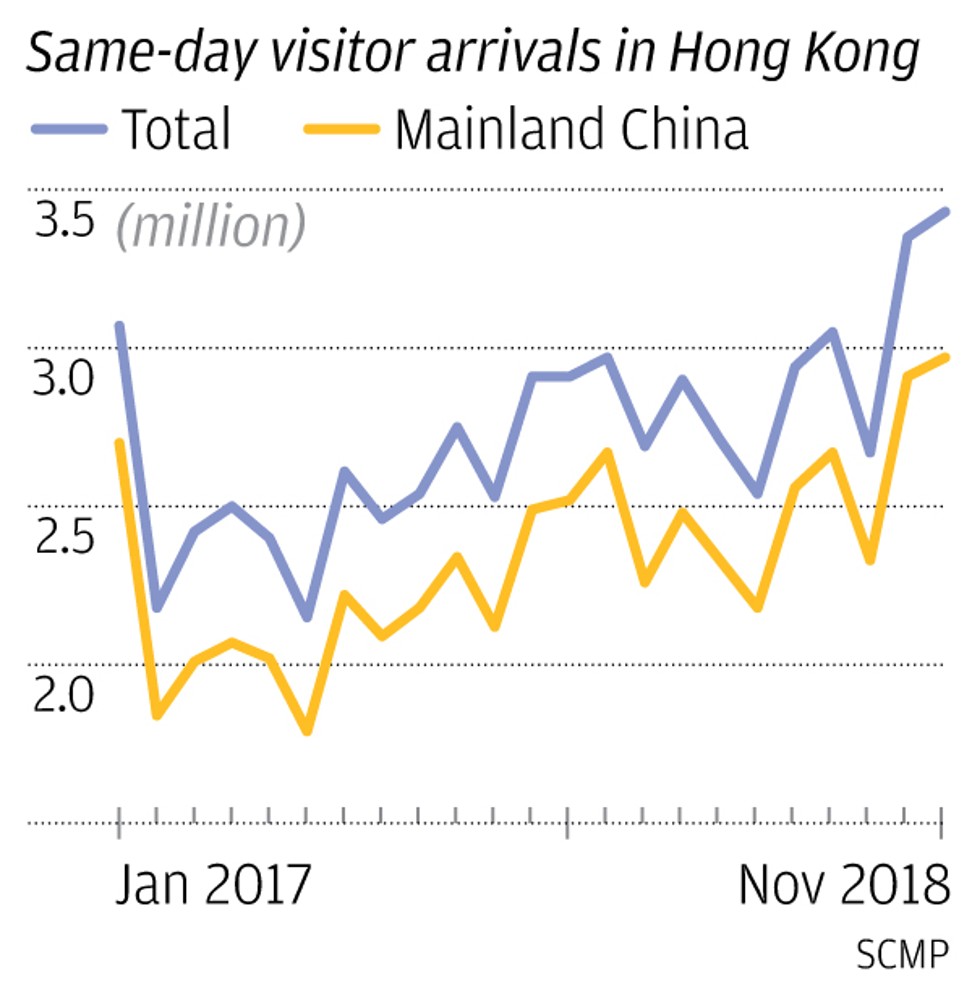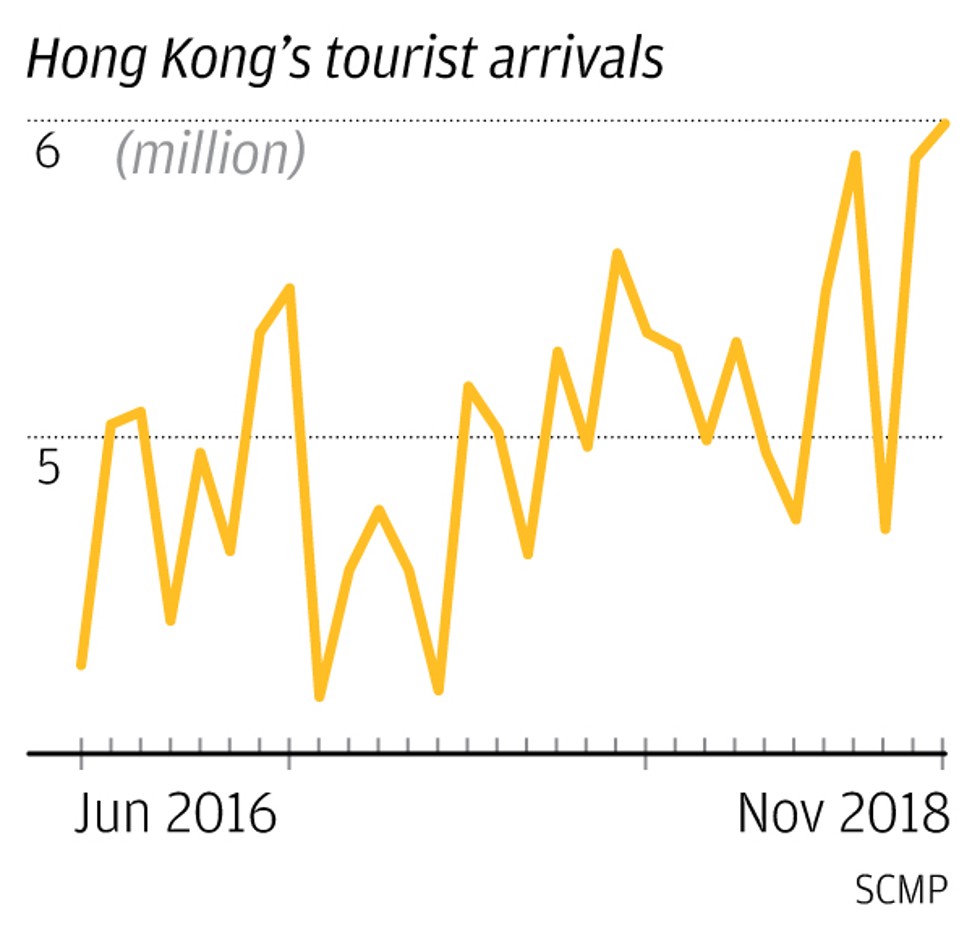
Mega bridge and high-speed rail fuel record 2.97 million mainland visitors on day trips into Hong Kong for November
- Tourism industry looking into expanding tours beyond shopping in city and to other nearby destinations to encourage more spending
Two new cross-border infrastructure projects helped fuel a record 2.97 million mainland visitors on day trips into Hong Kong in November, as critics slammed the trend for causing overcrowding and disturbances to locals.
The Hong Kong Tourism Board said on Monday that the number of mainland day trippers in the city surged 40.3 per cent and accounted for 86.5 per cent of total same-day arrivals in the month, compared with the same period last year.
The numbers coincided with the opening of the 55km Hong Kong-Zhuhai-Macau Bridge and the recently launched 26km stretch of the Guangzhou-Shenzhen-Hong Kong Express Rail Link.
Relief in sight for crowded Kowloon City as officials pledge tourist curbs
The visitor crowds were mostly observed in shopping malls in the once tranquil suburb of Tung Chung and residential areas in To Kwa Wan and Hung Hom.
Timothy Chui Ting-pong, executive director of the Hong Kong Tourism Association, said the industry was determined to expand local tourist routes and spots beyond shopping in 2019.
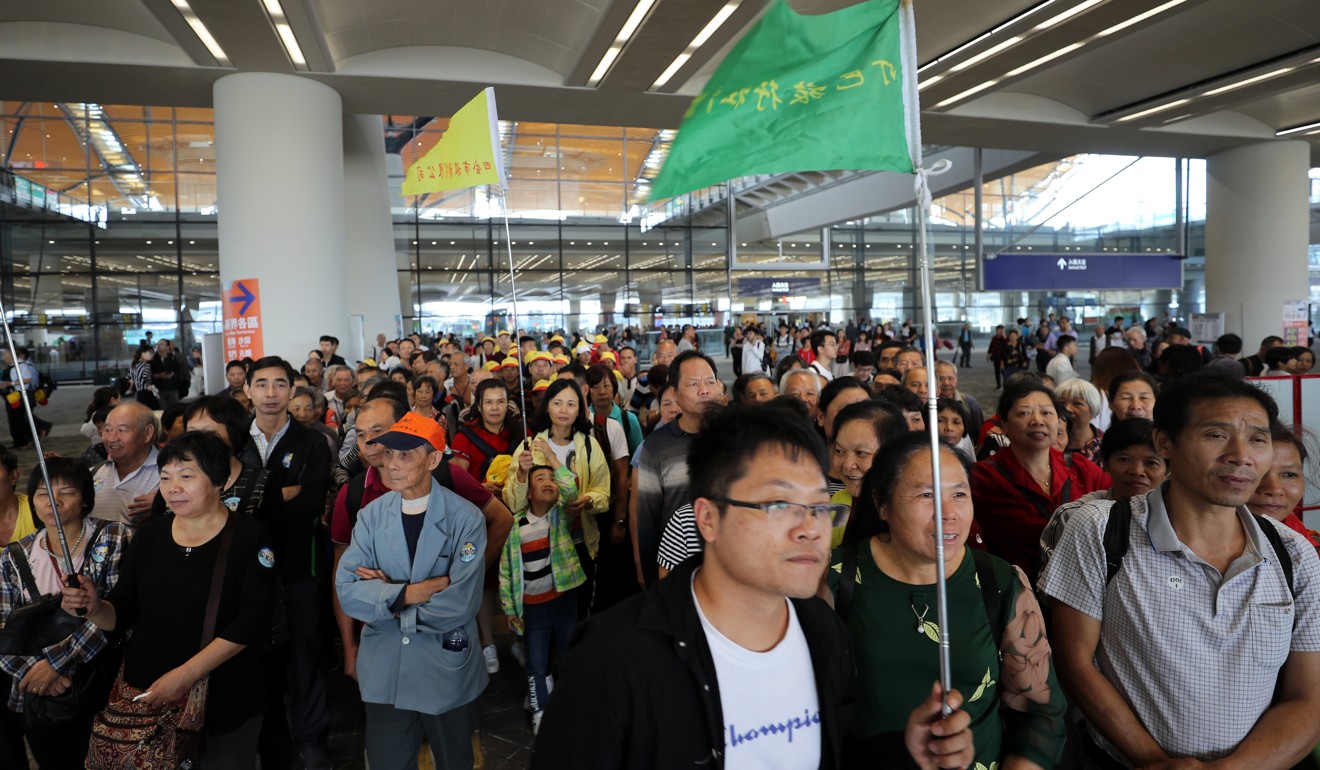
“There are some destinations which are not yet explored fully, such as Tamar Park in Central and Chi Lin Nunnery [at Diamond Hill],” he said. “Hong Kong needs more tourists to stay overnight as they spend more on average at about HK$6,000 per person.”
There are some destinations which are not yet explored fully
Day trippers are not seen as worth the hassle because the amount they spend in the city is relatively smaller, since they do not require accommodation.
Overall, mainland tourists are still the biggest spenders in Hong Kong and shelled out a total of HK$189.36 billion (US$24 billion) last year, a 1.4 per cent rise from 2016.
In November this year, a total of 5.99 million visitors came to Hong Kong – a 20.6 per cent jump from the same period last year.
From January to November this year, there were 10.7 per cent more visitors at 58.56 million compared with last year’s stretch.
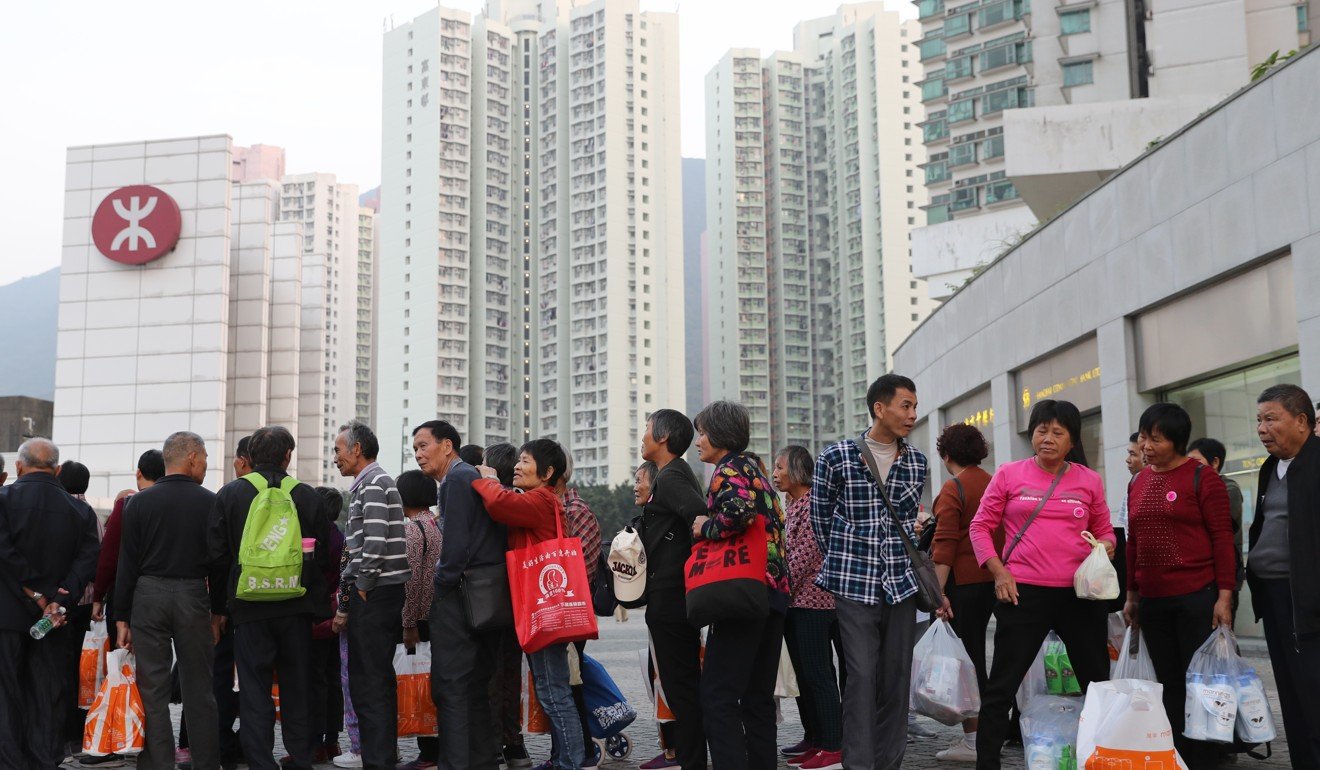
Mainland visitor numbers surged 25.8 per cent year on year to 4.63 million for the month of November, and grew 14.2 per cent to 45.91 million in the first 11 months of the year.
They accounted for almost four out of every five visitors in the city.
Relief for Tung Chung residents as mega bridge crowds ease
The mega bridge, which opened in November, brought tens of thousands of mainlanders into the city, most of them on day tours, who take public transport into Tung Chung on Lantau Island, the closest town to the structure’s Hong Kong checkpoint.
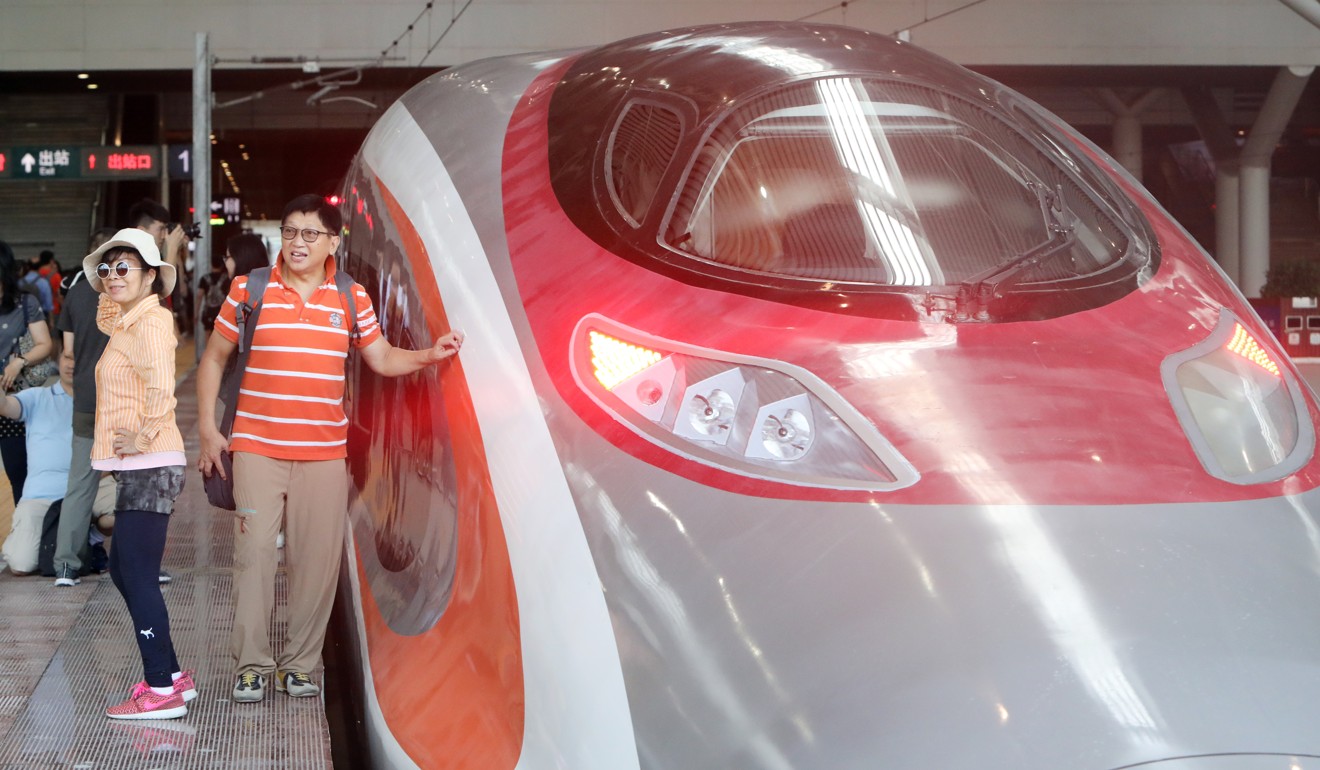
The influx sparked an uproar among residents and lawmakers, and measures were put in place by authorities, requiring visitors to book port-to-port shuttle bus tickets in advance, with the Guangdong provincial government restricting one-day weekend tours into Hong Kong.
Chui said it would be interesting to observe the number of mainland visitors who stay overnight in the city, after these measures were implemented.
In To Kwa Wan, an area popular with mainlanders as a one-stop shopping and dining hotspot, residents complained about their neighbourhood filling up with tourist-only shops and restaurants, as well as bad traffic from illegally parked coaches.
Even Hong Kong’s pro-Beijingers want curbs on mainland Chinese tourists
“A way out is to organise more tours with multiple destinations by including other cities such as Zhuhai and Macau,” Chui said.
In 2017, overnight visitors stayed 3.2 days in Hong Kong compared with 3.3 days in 2016, while spending about 2.4 per cent lower per person on average, at HK$6,443.


